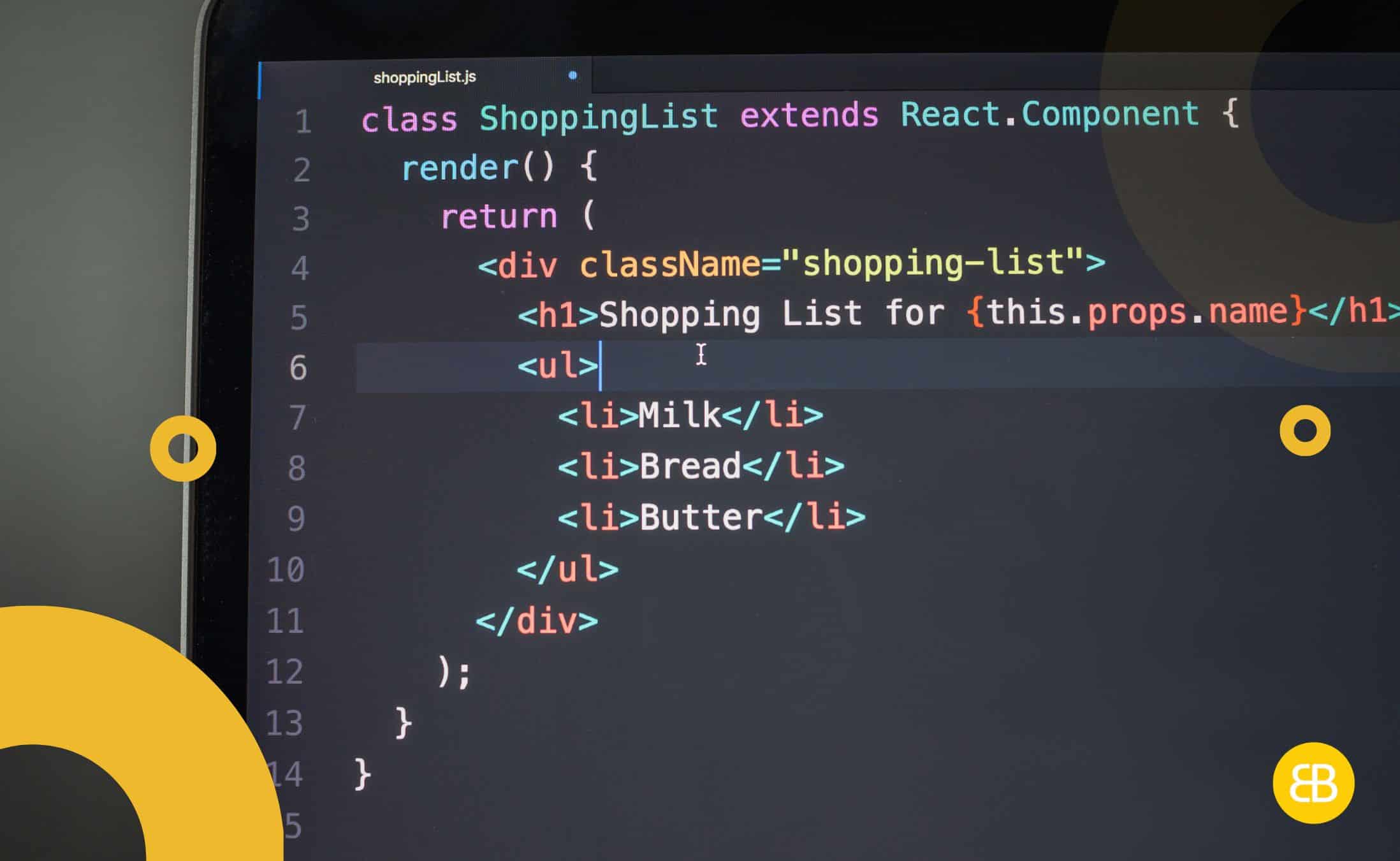Flutter vs React Native: Find a Framework

14 Jun 2021
ContentRoshan Manandhar
Table of Contents
There are nearly nine million mobile applications on the market right now. For developers, this means there’s a lot of competition. Trying to keep up the crowd can be costly and time-consuming.
Wouldn’t it be great if there was a way you could develop mobile applications faster? What about if you could reduce development costs without sacrificing quality? It may sound too good to be true, but there is a way to accomplish these lofty goals.
How?
You can successfully achieve these goals by utilizing cross-platform development frameworks. Two of the leading options on the market right now are the Flutter and React Native frameworks. But how can you choose which is right for you?
Choosing a framework isn’t a one-size-fits-all situation. What works for one company or project may not work for another. It all boils down to what works best for your preferences and application specifics.
The best decision is an informed one. Understanding the benefits and downsides of both framework options can help business leaders and developers make the best choice. Continue reading to learn how you can choose between Flutter vs React Native.
What Is Flutter?
Flutter is a portable user interface (UI). This means it’s a comprehensive Software Development Kit (SDI) that comes with its own tools and widgets.
Flutter enables cross-platform application development for iOS, Android, and desktop. Developers are given a simple way to create natively-compiled applications using a single code and then send it to market. Flutter is free and open-source.
The code used by Flutter is based on Dart. Dart is a quick, object-oriented programming language that hasn’t been around long. For most developers, however, Dart is easy to learn.
Who Developed Flutter?
Flutter was developed by a team at Google. With a big name like Google behind it, many experts believe Flutter will eventually be one of the most popular app development options. Currently, Flutter sits among the most popular choices despite being less mature.
Where Is Flutter Most Popular?
According to statistics, Flutter is the development program of choice for people living in the following regions:
- Australia
- Kenya
- China
- Bangladesh
- Japan
- Jordan
What Apps Were Made Using Flutter?
Several popular applications were made using the Flutter framework. These include the Google Ads app, eBay, and Alibaba.
What Is React Native?
React Native is an open-source framework that helps save development time and costs by allowing for code reusability across mobile platforms like Android, iOS, and desktops. Prototyping using React Native is effortless, as is debugging errors and resolving them.
The React Native framework makes use of JavaScript, which is a popular programming language. The design of this framework is the same as that of Flutter, and the components used to piece together apps are similar to Flutter’s widgets.
Since React Native has been around longer, it’s a more mature framework. This means React Native has had more time to develop a community of developers.
Who Developed React Native?
React Native was developed by a team at Facebook during the summer of 2013. It was released to the public in March or 2015.
Where Is React Native Popular?
According to statistics, React Native is the app development program of choice in the following areas:
- Ireland
- Argentina
- Belarus
- Canada
What Apps Were Made Using React Native?
Many popular mobile applications were made using React Native. Facebook, Instagram, and Discord are among the most notable apps created using this framework. Walmart, Wix, Pinterest, and UberEats are other good examples.
Flutter vs React Native: A Breakdown
To fully understand how the Flutter and React Native frameworks compare, it’s essential to understand the pros and cons of using each. Below is an in-depth look at the primary benefits and downsides of using each program.
Pros of Using Flutter
The benefits of using Flutter over React Native include a “hot reload” feature, less testing, and faster applications. These are discussed in more detail below.
1. The “Hot Reload” Feature
This built-in feature allows app developers to make changes on an as-needed basis. Once the changes are made, they are immediately seen in the application. Hot Reload” allows app development teams to make changes, fix issues, and test-drive new ideas instantly.
2. Significantly Reduced Testing
Since Flutter uses the same code and base application for both Android and iOS, testing is significantly reduced. This makes the QA process much faster.
3. Faster Applications
Applications developed using Flutter perform quickly and without glitches. This is thanks mainly to how Flutter uses the Skia Graphics Library, which places most of the work on the graphics processor unit. Users will never have to deal with hanging device scrolling again.
4. More Visually Appealing
Flutter is best known for its visual appeal, which pays attention to even the smallest of details. This is thanks largely to the way Flutter uses built-in widgets versus native system components. Developers have the choice to use their own widgets or pre-built ones.
5. Better Support
The Flutter framework is known to be backed by better support when compared to React Native. Users have the ability to get assistance whenever they need, whereas other frameworks are severely lacking in this department.
Cons of Using Flutter
There are a few downsides to using the Flutter framework, including a smaller community and a more extensive code. These are discussed in more detail below.
1. A Smaller Community of Developers
Flutter’s community of developers is significantly smaller than the one React Native has. However, it’s important to note that more developers are showing an interest in Flutter, with 61 percent saying they’d consider using it. Unfortunately, also contributing to Flutter’s small community is that Dart isn’t as widely used as JavaScript.
The good news? Flutter’s developmental community is increasing exponentially.
2. Large Code Application to Keep Up
An application developed using Flutter will have significantly more code to keep up with versus one made using React Native. While developers are trying to reduce overall code size, it can be a lot for smaller teams to maintain as-is.
Pros of Using React Native
There are several benefits of using React Native. These include that it uses JavaScript, provides more developmental freedom, and has a large community of developers. Each of these benefits is discussed in more detail below.
1. Uses JavaScript
The React Native framework is built using JavaScript, which is a massively popular programming language. This means many developers are already familiar (and fluent) with it. Unlike Flutter, there’s unlikely to be a learning curve when starting to write the application.
React native can also be built using a subscript of JavaScript called TypeScript. This is a significant benefit for developers who prefer to use statically-typed programming languages.
2. More Developmental Freedom
React Native allows developers to decide precisely what solutions they want to use and then makes it simple to incorporate that into their application. Developers can choose to use a custom UI library. If they’d rather, however, they can also write their own.
This developmental freedom makes it easier to create an application exactly the way you want to. There’s more freedom for design and usage, which is a significant benefit for those who have specific ideas about their app.
3. Massive, Active Community of Developers
The React Native developer community is both massive and incredibly active. This community has created and sourced countless libraries, UI frameworks, and countless tutorials. Why is this important?
All of this information is easily accessible to anyone who wants to learn how to use the React Native framework. It’s the perfect solution for beginner developers or those who are trying to hone their talents. With one of the largest repositories of materials, tools, and articles, there’s no limit to what a person can learn.
Cons of Using React Native
There are a few downsides to using React Native, including that it isn’t native, and there are many abandoned packages. These are discussed more in detail below.
1. It’s Not Really Native
The name of this framework is misleading because it isn’t really a form of native programming. No cross-platform solution can replicate the user interface and performance seen in native apps. But, React Native does get significantly closer to replicating the native experience when compared to the Flutter framework.
2. There Are Lots of Abandoned Packages
React Native may have a massive library, but it isn’t kept up to date as it should be. Many packages have been designed poorly or abandoned entirely. This can be frustrating when you want to use a UI library.
3. v1 has not been released
Facebook has not even release v1 for React native raising question on its stability and extendabiity.
Choosing Between the Two
Now that you know the pros and cons of Flutter vs React Native, how can you choose between the two? There’s no singular correct answer, as one framework may be better in certain situations. To decide which framework works best for you, ask yourself the questions below.
Are You Already Fluent In JavaScript?
If you’re already fluent in JavaScript, React Native will be the easier choice. You’ll already have the script basics down and won’t need to learn a new programming language. This makes getting started significantly simpler.
Is Framework Maturity Important to You?
For some developers, framework maturity is important because it shows reliability. If this is the case for you, then React Native is the best choice. React Native is a few years more mature than Flutter.
Is Easy Learning a Must for You?
If you don’t know either programming language fluently, you may want to choose the easiest option to lessen the learning curve. Many developers agree that Flutter’s Dart is the most straightforward programming language to learn if you don’t already know JavaScript.
Do You Want a Large UI Library Available During Development?
If you want an extensive user interface library available during development, you’ll want to choose React Native, hands down. Their UI library is unrivaled by any other application development framework.
Is Speed Most Important to Your Application?
Speed is vital for any application, but is this one of the most critical aspects of your future app? If that’s the case, you’ll want to choose Flutter. Applications designed with the Flutter framework are faster than those developed using React Native.
Do You Want to Use the Framework With the Fastest Bug Fixes?
While fixing bugs using either framework is relatively straightforward, Flutter tends to be easier. If this is most important to you, Flutter is your best choice.
Do You Want Simple Code Upkeep?
Moving forward, it may be important that your application’s code is as simple as possible. This is especially important for companies with limited staff. If this is the situation for you, then React Native is the best choice.
Does Your Application Rely Heavily on Visuals?
Some applications rely more heavily on visuals than others. If this is the case for your app, Flutter is the best choice, hands down. The Flutter framework is unrivaled when it comes to graphics rendering and beautiful visual details.
Do You Want Unrivaled Support?
If having ongoing support available is important, Flutter wins hands down. React Native is known for poor support, whereas Flutter shines in this department.
More Questions About Flutter vs React Native?
Flutter and React Native are similar frameworks but with slight distinct differences that make all the difference. Which framework is suitable for your project will depend on your situation and preferences. The information above can help you make an informed decision.
Do you have more questions about Flutter vs React Native? Or do you want to talk about the professional development of your application idea?
Contact us today and one of our associates can answer any questions you still have. They can also discuss your application idea or project and let you know how we can help.
See more articles like this
See all“We’re very happy with the results of EB Pearls’ work. Since its launch, the app has had over 7,000 downloads, with around 6,000 users completing the signup process in the first 6 weeks. ”

— Founder at Intro Dating




